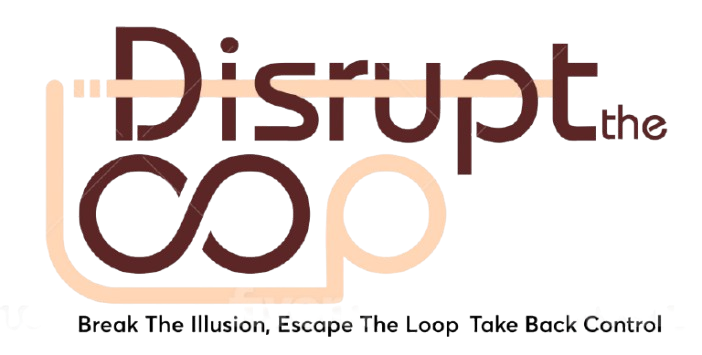In today’s fast-paced world, we often glorify structure, productivity, and efficiency. But ironically, many people find themselves addicted to chaos—the very thing that disrupts their daily lives. Whether it’s jumping from job to job, engaging in tumultuous relationships, or constantly seeking dramatic change, chaos addiction is more than just a habit—it’s a deeply rooted psychological pattern.
If you’ve ever felt uncomfortable during peaceful moments or found yourself unconsciously stirring up conflict, you may be experiencing chaos addiction. Let’s dive deeper into what this phenomenon is, its causes, signs, consequences, and how to break free.
What Is Chaos Addiction?
Chaos addiction describes a subconscious attachment to disorder, instability, and drama. People who experience this may actively seek out conflict or disruptive situations to fill an emotional void, feel excitement, or regain a sense of control.
While it’s not an officially recognized disorder in the DSM-5, many mental health professionals observe repeated patterns of self-sabotage, emotional instability, and dissatisfaction among those who are addicted to chaos.
Why Do Some People Crave Chaos?
The reasons behind chaos addiction vary, but common factors include:
🔹 Early Childhood Experiences – Growing up in an unstable environment can teach the brain to view chaos as normal. Stability may feel foreign or even unsafe.
🔹 Dopamine and Adrenaline Rushes – The thrill of an argument or dramatic situation can activate the brain’s reward system, reinforcing chaotic behaviors.
🔹 Fear of Boredom or Emptiness – Some people equate calmness with stagnation, leading them to disrupt peaceful moments.
🔹 Self-Sabotage & Deep-Seated Beliefs – A subconscious belief that life must be difficult can drive people to create unnecessary struggles.
In short, for many, chaos isn’t just a reaction—it’s a way of life.
Signs of Chaos Addiction
How do you know if you or someone you know is addicted to chaos? Here are some common signs:
Behavioral Indicators
⚡ Constantly changing jobs or living situations without a solid reason.
⚡ Seeking out toxic or unstable relationships.
⚡ Overloading schedules to the point of extreme stress.
⚡ Creating problems where none existed (e.g., picking unnecessary fights).
⚡ Making impulsive decisions that lead to disruption.
Emotional Indicators
😰 Feeling restless or uneasy when life is calm.
😰 Experiencing constant dissatisfaction, even when things are going well.
😰 Craving the highs of drama or crisis situations.
😰 Associating boredom with meaninglessness or insignificance.
Patterns in Relationships & Daily Life
People addicted to chaos may unknowingly bring instability into their relationships by:
❌ Overreacting to minor issues.
❌ Mistrusting partners and seeking unnecessary conflict.
❌ Thriving on gossip, jealousy, or emotional outbursts.
❌ Feeling suffocated by routine or stability.
These behaviors aren’t just limited to romantic relationships—they can appear in friendships, family dynamics, and work environments as well.
The Consequences of Chaos Addiction
While the temporary excitement of chaos might feel rewarding, its long-term effects can be deeply harmful.
1. Mental Health Struggles
Living in a state of constant upheaval takes a toll on the mind and body. Chronic stress, anxiety, and even depression are common among chaos addicts. The emotional rollercoaster can also weaken coping mechanisms, making it harder to manage emotions effectively.
2. Strained Relationships
Chaos addiction erodes trust and stability in relationships. Friends, family, and partners may feel like they have to walk on eggshells, never knowing when the next wave of drama will hit. Over time, these relationships may become distant or break down completely.
3. Impaired Productivity & Decision-Making
A chaotic lifestyle prevents consistency in work and personal growth. Instead of making steady progress toward goals, chaos addicts prioritize short-term emotional highs over long-term success. This leads to poor decision-making, career instability, and financial struggles.
How to Break Free from Chaos Addiction
Overcoming chaos addiction requires self-awareness, intentional action, and often, external support. Here’s how to start:
1. Recognize the Problem
The first step to breaking free is admitting the issue. Ask yourself:
✔️ Do I feel uncomfortable when life is peaceful?
✔️ Am I unconsciously creating drama in my relationships?
✔️ Do I feel a need for excitement, even if it causes harm?
Journaling and self-reflection can help identify patterns in your behavior.
2. Seek Professional Help
Therapy—especially Cognitive-Behavioral Therapy (CBT)—can help rewire thought patterns and break the cycle of chaos-seeking behavior. A therapist can also address underlying trauma or self-sabotaging tendencies.
3. Build Healthy Habits
Replacing chaos with stability requires deliberate effort. Some key steps include:
✅ Creating routines – Establish daily habits for sleep, work, and self-care.
✅ Practicing mindfulness – Meditation and deep breathing help build emotional control.
✅ Setting boundaries – Learn to say no to people and situations that fuel chaos.
✅ Focusing on long-term goals – Shift attention away from drama and toward self-improvement.
4. Develop a Support System
Surround yourself with people who encourage stability. Trusted friends or support groups can provide accountability and help you recognize when old patterns are creeping back in.
5. Learn to Embrace Peace
Chaos addicts often mistake calmness for boredom. Instead of fearing peace, reframe it as a sign of growth and emotional maturity. Learning to sit with stillness can be one of the most powerful steps toward lasting change.
Final Thoughts: Choosing Stability Over Chaos
Breaking free from chaos addiction isn’t easy, but it’s entirely possible. By understanding the causes, recognizing destructive patterns, and committing to healthier choices, you can shift from a life of turmoil to one of balance and fulfillment.
Remember: Peace isn’t boring—it’s the foundation of a meaningful life. Start small, embrace stability, and build a future that isn’t driven by chaos, but by purpose.

